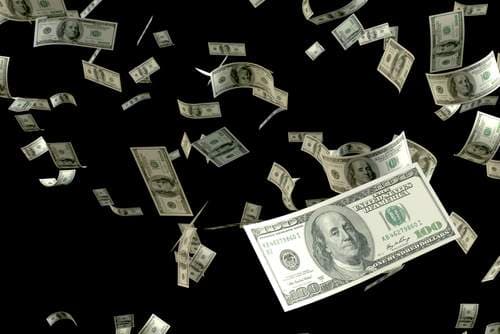
We’ve honed in on the dangers of soaring debt since well before the founding of the Grey Swan Investment Fraternity last year.
It’s been the focus of our life’s work — and that of many esteemed economists and investors for decades before that.
But we can’t help but feel like things aren’t just getting worse — they are at a faster rate.
Well, we’re right. Debt isn’t just soaring, it’s gone exponential:

We’re gonna need a taller chart soon enough.
In the past 27 months, more debt has been created in the U.S. than during the first 215 years of the Republic.
That kind of exponential move isn’t sustainable. Like tulip prices in 1637 or shares of Cisco in January 2000, it can’t last. The question isn’t whether this will collapse — it’s whether or not we get a massive market run first.
That seems to be in the cards — what Austrian Economist Ludwig von Mises called the “crack up boom.”
And it’ll be fueled by a combination of debt and the collapse of the purchasing power of the dollar. Not a company’s earnings or AI spend. That won’t be a typical bull market — it’ll be a terrifying one.
~ Addison
P.S. For the first time in living memory, a principal economist at the Fed has openly explored the mechanics of gold revaluation.
To be clear, the U.S. government still officially values its 261.5 million troy ounces of gold at $42.22 per ounce, a relic from the early 1970s.
But what if — as Ray Dalio, Elon Musk, and even the Chinese central bank seem to believe — the U.S. is preparing for a new monetary regime?
According to Musk’s new Grok model, revaluing the U.S. gold stash to today’s ~$3,380 spot price would generate an $873 billion paper windfall.
That could be used to expand the Fed’s balance sheet, issue new certificates, or offset the nation’s eye-watering debt load.
Dalio added on X: “The U.S. dollar used to be backed by gold. It’s not farfetched to think we may be headed there again… Once people lose trust in fiat, the pattern repeats: print, inflate, devalue, and return to gold.”
Meanwhile, China is preparing. Their gold deliveries against futures contracts have doubled in the past month.
The signal is clear: when the faith in fiat falters, the old gods of money — gold, silver, hard assets — tend to return.
We know that relative to money supply creation, gold prices are still undervalued — as are many other metals and commodities in general.
We continue to like gold as a long-term store of value, and this quarter’s earnings reports from gold miners are showing signs of life across the resource sector.
While this market rally continues, by all means, take some profits in high-flying trades. But it’s still safe to stay invested in parts of the market that are rising for fundamental reasons.
As always, your reader feedback is welcome: feedback@greyswanfraternity.



